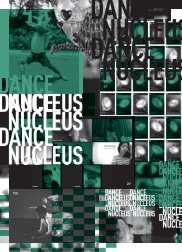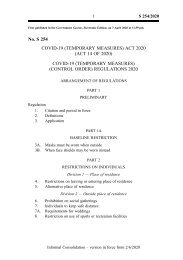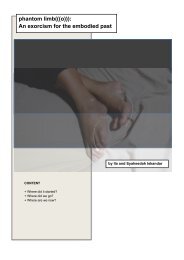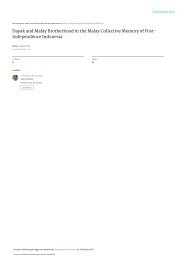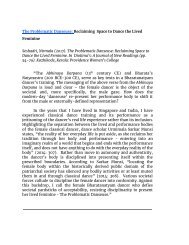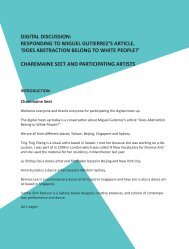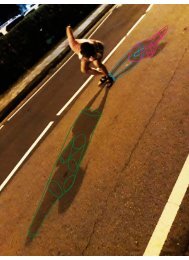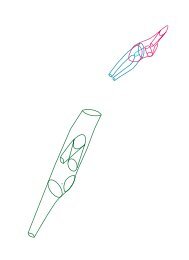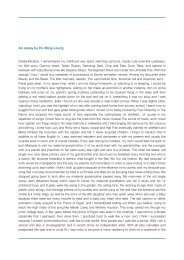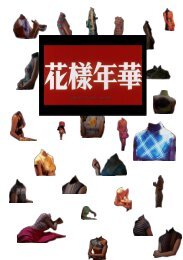FUSE#2
FUSE is a bi-annual publication that documents the projects at Dance Nucleus .
FUSE is a bi-annual publication that documents the projects at Dance Nucleus .
Create successful ePaper yourself
Turn your PDF publications into a flip-book with our unique Google optimized e-Paper software.
Element# 2<br />
BAHASA KOREOGRAFI<br />
what is the point of me?<br />
by Norhaizad Adam<br />
Visual Keywords recorded from Silat Duduk<br />
with facilitators and artists at the ELEMENT#2:<br />
Bahasa Koreografi Residency:<br />
● Social dramaturgy, process of socialization<br />
● The socialist body<br />
● Transit and transmission<br />
● Transnational Malay, critics of modern nationalism<br />
● Concept of home<br />
● How do I own this contemporary body?<br />
● Bumiputra rights<br />
● Text, Extratext, Paratext and Metatext<br />
● Performativity of the ironic<br />
● Democratic and Majority will<br />
● Minority rights is important too<br />
● Singapore Malay Pop culture<br />
● Negotiation of Malay social dance or social gathering<br />
● Noise of the Asiatic soundscape: management, coloniser, gatekeepers etc.<br />
● Tension between Majority and Minority<br />
● Choreography as critical practice<br />
● Diaspora has power, economy and money<br />
● Nationalism has affected what Malay is?<br />
● Translocal rather than Transnational<br />
● Responsibility of traditional artist is heavier than popular celebrities<br />
● Minority complex<br />
● Daniel: What’s the relationship of dance to you now?<br />
● Ming Poon: How far are you willing to go? Find your Instrumentalization<br />
● Orientalism<br />
● Normalisation<br />
● Minority identity<br />
● Malay body as sympathy body<br />
Article 152<br />
For the ELEMENT#2 residency at Dance Nucleus, I knew by<br />
instinct that Article 152 of the Singapore Constitution will be a<br />
necessary tool for the crafting of my discovery and ideation<br />
process. In my perspective, this article is intended to protect the<br />
rights of minority races within Singapore and puts forth ‘special<br />
position of the Malays’.<br />
I am curious to imagine in between the lines and maybe uncover<br />
a hidden clause that seeps through cracks in the wall. I wonder if<br />
loaded words such as ‘privileged’, ‘underprivileged’, ‘majority’<br />
and ‘minority’ can come out in an everyday Singaporean<br />
conversation and Singapore’s current social, economic and<br />
political context.<br />
From my standpoint, I question about the Malay diaspora in modern times.<br />
How nationalism and traditionalism during colonial ruling affects what being a Malay is?<br />
What does being a Malay in Singapore mean?<br />
What does being Malay in Malaysia mean?<br />
What does being a Malay in Indonesia mean?<br />
What are the concerns and negligence of Malay minorities in Singapore?<br />
I reimagined Article 152 by changing the scale of minority<br />
according to social, political and economic demographics in<br />
Singapore. Then, I realize that the concerns may directly affect<br />
me. However, there is an air of tension between majority and<br />
minority relevance as an Anak Melayu Singaporean artist. I map<br />
out my thoughts on the comparisons of different minority status.<br />
79 80




